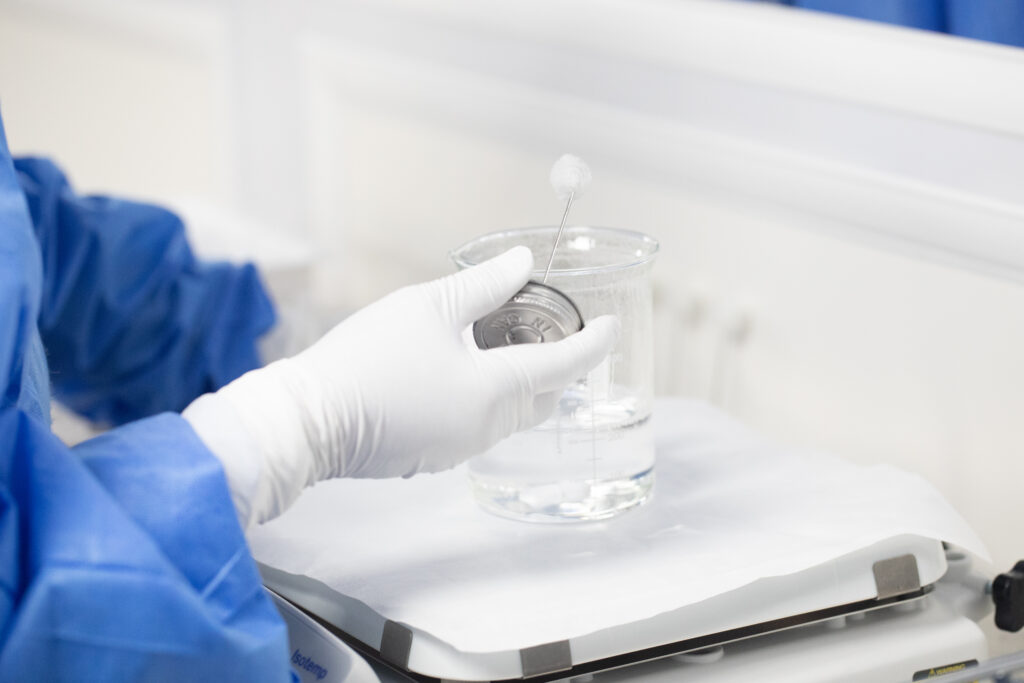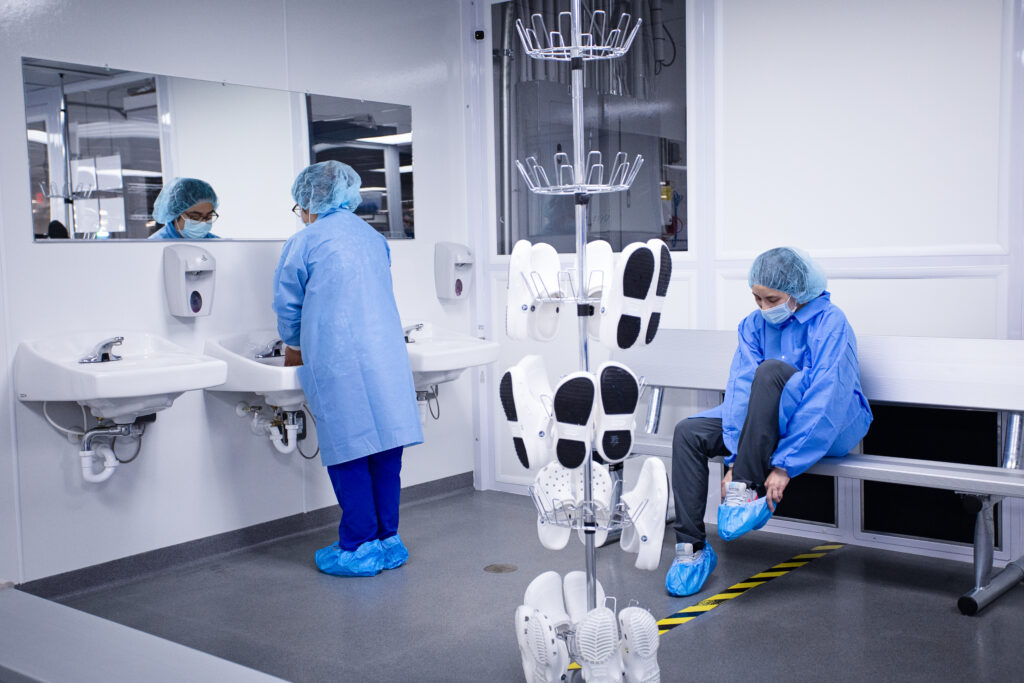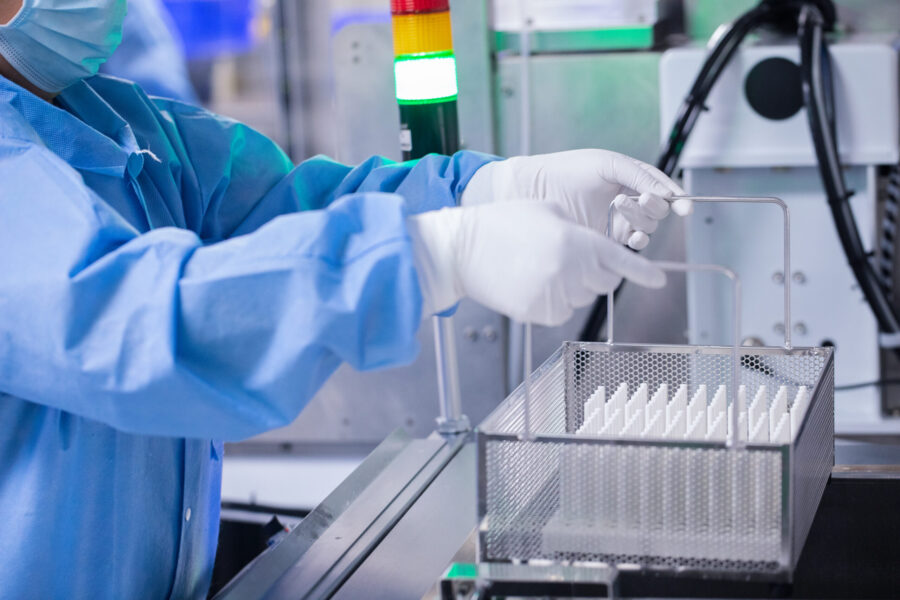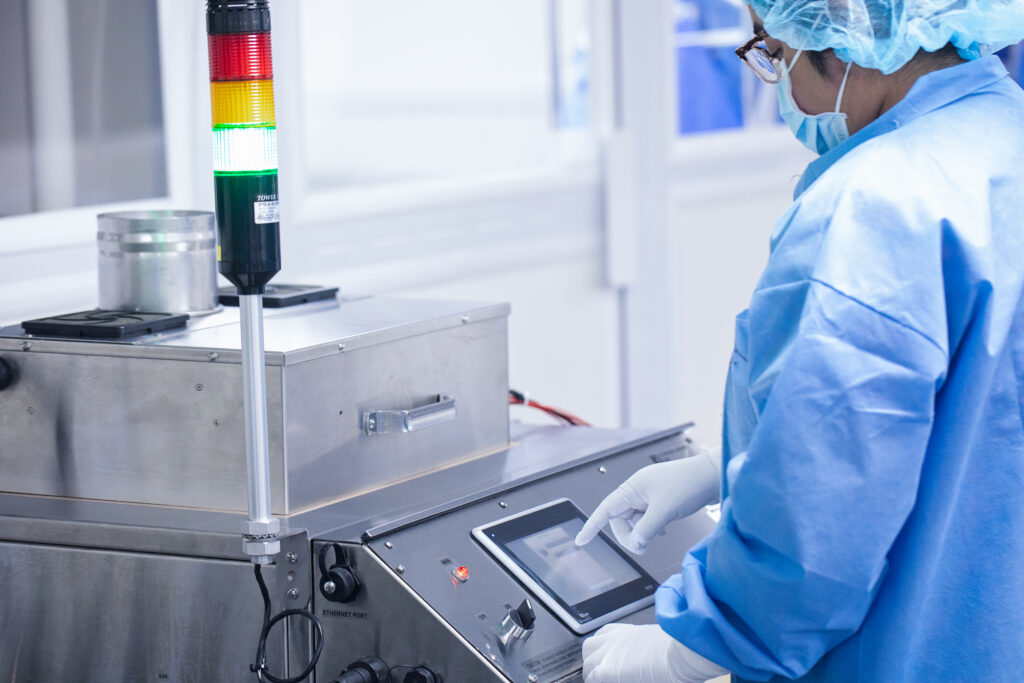How can we ensure that medical device packaging remains sterile up to the point of use?
Maintaining the sterility of packaging until it reaches the patient or healthcare provider is not just a matter of regulatory compliance—it is essential for ensuring patient safety and device effectiveness.
In this article, we’ll provide an in-depth exploration of the rigorous standards, best practices, and innovative approaches that shape sterile packaging for medical devices. We will delve into everything from material selection and environmental controls to cutting-edge technologies and quality assurance protocols that define industry best practices.
Understanding Sterility in Medical Device Packaging
Sterility, in the context of medical devices, means that a product is free of viable microorganisms. Achieving and maintaining it is crucial for medical devices, particularly those that are used in surgeries or are implanted within the body, where the introduction of microbes could lead to serious infections and complications.
When sterility is breached, the consequences are far-reaching and can be catastrophic. According to a study by the Centers for Disease Control and Prevention (CDC), approximately 1.7 million hospital-acquired infections are reported annually in the U.S., contributing to nearly 100,000 deaths and significant financial burdens estimated at about $20 billion each year.
Patients exposed to non-sterile devices are at risk of developing infections that can lead to prolonged hospital stays, increased medical costs, and severe health complications, including sepsis or organ failure. Furthermore, infections stemming from contaminated medical devices can result in increased antibiotic resistance, complicating treatment options.
Regulatory requirements
In response to these risks, regulatory bodies such as the U.S. Food and Drug Administration (FDA) and international standards organizations have set rigorous requirements for sterility. These standards guide manufacturers on best practices for microbial control, including the use of validated sterilization methods, environmental monitoring during production, and rigorous testing of packaging systems to ensure they maintain an effective barrier against contamination. For example, manufacturers must comply with ISO 11607, which specifies requirements for materials, sterile barrier systems, and packaging systems.

Key Factors Affecting Sterility
Maintaining sterility in medical device packaging is influenced by a variety of critical factors, each contributing to the overall effectiveness of the sterilization process and the integrity of the sterile barrier. Here are the major components that OEMs and contract manufacturers must manage:
Material Selection
Choosing the right materials for packaging is crucial for ensuring sterility. Common ones include medical-grade plastics, laminates, and barrier coatings, which are selected for their ability to maintain integrity under sterilization conditions such as heat, radiation, or chemical exposure. Innovations in material technology also see the use of smart materials that can indicate sterility status or detect breaches in the packaging.
Sterilization Methods
As mentioned, various sterilization methods are employed depending on the nature of the medical device and its packaging materials. Each method has specific advantages and is chosen based on its compatibility with the materials and the efficacy it offers in eliminating microbial contamination.
- Ethylene Oxide (EtO): Preferred for plastics and sensitive electronic devices, as it operates at lower temperatures. According to the FDA, EtO sterilizes approximately 50% of all sterile medical devices in the U.S.
- Gamma Radiation: Effective for both bulk processing and dense materials, this method ensures deep penetration without the need for heat or moisture.
- Steam Sterilization (Autoclaving): Suitable for heat-resistant materials, using steam under pressure to achieve sterilization.
- Electron Beam (E-Beam) Sterilization: Provides a quick and efficient method for items that can tolerate high doses of radiation over a short period.
Environmental Controls
When it comes to medical device packaging, maintaining a controlled environment is crucial for ensuring sterility. Most medical device packaging facilities utilize ISO Class 7 or ISO Class 8 cleanrooms. These classes specify the maximum allowable particles in the air, helping to minimize potential contamination. For instance, an ISO Class 7 cleanroom allows no more than 352,000 particles (≥0.5 microns) per cubic meter, which is stringent enough to prevent contamination during the packaging process of most medical devices

Human Factors
Human interaction with products during the packaging process can introduce contaminants, so it is important to minimize direct contact.
Personnel who work in these controlled environments undergo rigorous training in proper aseptic techniques and regularly demonstrate their proficiency in maintaining sterility. They must adhere to stringent cleanroom behaviors, including wearing appropriate sterile garments and following detailed procedures for entering and operating within the cleanroom.
Technologies and Techniques for Sterile Packaging
The development and application of advanced technologies and techniques are another important aspect in enhancing the sterility and integrity of medical device packaging. These innovative approaches streamline the packaging process while significantly reducing the risk of contamination.
Some of the most effective technologies and techniques currently in use are:
Aseptic Processing
Aseptic processing is one of the key strategies employed to maintain sterility in medical device packaging. It involves keeping the product and the packaging materials sterile throughout the entire process. Equipment and containers are sterilized separately using methods such as heat, radiation, or chemical sterilants, and then brought together in a sterile environment to assemble the final product. This method is especially crucial for products that are sensitive to traditional sterilization methods, such as those containing biologics or pharmaceuticals.
Blow-Fill-Seal (BFS) Technology
Blow-fill-seal technology is a form of advanced aseptic processing. It integrates the formation of containers, filling them with the product, and sealing them into a continuous, automated process conducted under aseptic conditions. BFS technology is highly efficient for the mass production of sterile products, significantly reducing human intervention and thus the risk of microbial contamination.
Real-Time Monitoring Systems
Incorporating real-time monitoring systems into the production environment allows for continuous oversight of critical cleanliness and sterility parameters. Sensors and cameras can detect particulate levels, temperature fluctuations, and other environmental variables that might compromise the sterility of the packaging process. These systems provide immediate feedback and alerts, enabling rapid response to potential issues before they affect product sterility.
Innovative Sealing Techniques
Sealing technology plays a fundamental role in maintaining the integrity of sterile barriers. Advances in sealing technology include the use of laser and ultrasonic sealing, which provide strong, consistent seals without the need for high temperatures that could damage sensitive products. These technologies ensure that the packaging is completely sealed off from any microbial ingress, maintaining sterility until the point of use.
Smart Packaging
Smart packaging incorporates features that can monitor the condition of the package and the status of its contents. This can include indicators for temperature exposure, humidity levels, and even tampering. Some smart packages are equipped with microchips or indicators that change color if the product has been exposed to conditions that could compromise its sterility, providing an additional layer of safety and information for end-users.
These advancements are crucial for the ongoing efforts to ensure that medical devices delivered to the market are safe, effective, and free of contamination.
Quality Control and Assurance
With the increasing complexity of medical devices and their packaging requirements, quality control and assurance are more critical than ever. These processes ensure that every aspect of production adheres to stringent standards, thus safeguarding the sterility and integrity of medical devices.
- Material Inspection and Selection: Quality control begins with the careful inspection and selection of packaging materials that meet all required specifications for sterility and barrier effectiveness. Materials are tested for compatibility with the sterilization method used and for their durability under storage conditions.
- Equipment Calibration and Maintenance: Regular calibration and maintenance of packaging equipment ensure that all machinery operates within specified parameters, reducing the risk of contamination or packaging failures that could compromise sterility.
- Process Validation: Validation is a meticulous process that involves confirming that the packaging systems consistently produce a result meeting predetermined acceptance criteria. This includes validating the sterilization processes (like EtO, gamma radiation, or steam sterilization) to ensure they effectively eliminate microbial life without damaging the product or packaging.
Once the sterilization and packaging processes are validated, continuous monitoring and testing are imperative to maintain the established standards of sterility and quality. This comprehensive approach includes several key practices:
- Continuous Monitoring and Testing
-
-
- Bioburden and Sterility Testing: Assess the microbial load before sterilization and confirm sterility afterward to ensure the processes are effective.
- Environmental Monitoring: Continuously monitor the cleanroom environment for temperature, humidity, and particulate levels using advanced sensors to maintain required conditions.
-
- Real-Time Data Collection
-
-
- Utilize real-time data systems to monitor critical parameters and instantly adjust processes to prevent potential contamination risks.
-
- Quality Assurance Reviews
-
-
- Conduct regular reviews and audits of sterilization and packaging processes to ensure compliance with regulatory standards and to facilitate continuous improvement.
-
- Documentation and Traceability
-
-
- Maintain thorough records of all sterilization parameters, quality control results, and material handling to ensure traceability and regulatory compliance.
-
- Staff Training
-
-
- Ensure all personnel are regularly trained in the latest aseptic techniques and understand their critical role in maintaining sterility through comprehensive training programs.
-
- Advanced Sealing Techniques
-
-
- Employ advanced sealing technologies like laser and ultrasonic sealing to ensure robust and reliable package integrity.
-
- Smart Packaging Technologies
-
- Incorporate smart packaging features such as time-temperature indicators and tamper-evidence mechanisms to monitor package conditions and maintain consumer trust.
The application of these strategies is what sets apart leading manufacturers in the medical device industry. They not only adhere to stringent regulatory requirements but also cater to the evolving needs of healthcare providers and patients, offering assurances of safety, efficacy, and quality.
The Future of Sterile Medical Device Packaging
While the current landscape of medical device packaging already features advanced technologies and rigorous standards, the future holds even more potential for innovation and improvement.
- Nanotechnology: Recent advancements in nanotechnology have led to the development of nano-silver coatings that show promise in reducing microbial growth on device surfaces, as demonstrated in a 2021 study published in Nano Letters. Utilizing these kinds of technology in packaging can enhance barrier properties and provide new ways to monitor and maintain sterility.
- Biodegradable and Sustainable Materials: As environmental concerns grow, the development of sustainable, biodegradable packaging materials that maintain sterility could be a significant focus. These materials would need to balance environmental benefits with rigorous sterility requirements.
- Internet of Things (IoT) and Connectivity: Packaging that can communicate with digital health systems to report on sterility status, storage conditions, and even usage patterns could revolutionize how medical devices are managed within healthcare settings, enhancing safety and compliance.
- Personalized Packaging Solutions: With advances in 3D printing and on-demand manufacturing, future packaging solutions could be customized for individual patients or specific medical procedures, which would optimize sterility while reducing waste.
- Enhanced Traceability Systems: Technologies like blockchain could be employed to improve the traceability of sterile medical devices from manufacture to use, ensuring that any potential contamination or breach in protocol is documented and addressed swiftly.
Conclusion
The innovations, along with ongoing enhancements in sterilization techniques, quality assurance protocols, and regulatory frameworks, will continue to drive improvements in sterile medical device packaging.
However, the aim for manufacturers won’t be only to meet current standards but also to anticipate future challenges and needs, ensuring that medical devices remain safe and effective in an ever-evolving healthcare landscape. This commitment will not only protect patients but also enhance the overall efficacy and reliability of medical treatments in our rapidly advancing healthcare environment.
Summary
- Maintaining sterility in medical device packaging is crucial for patient safety, device effectiveness, and regulatory compliance.
- Sterility means that a product is free from viable microorganisms, and breaches can lead to severe infections, prolonged hospital stays, and antibiotic resistance.
- Regulatory bodies like the FDA and ISO set rigorous standards, such as ISO 11607, to guide microbial control and packaging systems.
- Medical-grade materials and smart indicators help maintain the integrity of the packaging, while sterilization techniques like ethylene oxide, gamma radiation, steam sterilization, and electron beam ensure that devices remain sterile.
- ISO Class 7 or 8 cleanrooms are used to prevent contamination, while strict personnel training minimizes contamination risks.
- Aseptic processing maintains sterility throughout the packaging process, and Blow-Fill-Seal (BFS) technology reduces contamination through automation.
- Real-time monitoring sensors detect potential risks, and innovative sealing techniques ensure strong barriers against breaches.
- Material selection ensures packaging is both sterile and durable, while equipment maintenance prevents contamination through regular calibration.
- Looking ahead, nano-silver coatings offer the potential to reduce microbial growth, while biodegradable materials strike a balance between sterility and environmental friendliness.
- Packaging equipped with IoT can report storage conditions directly to digital health systems, and 3D printing enables the creation of custom packaging solutions.
- Manufacturers should continue to innovate and anticipate future challenges to ensure that medical device packaging remains both safe and effective.


